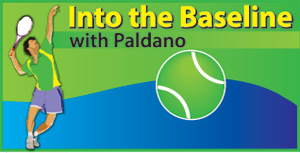Missing link – High Performance road
View(s):The decline of our Tennis was once again noticed in the lowest Junior event of the world, in the last 3 weeks- ITF Group 5. ITF Junior events are meant to be the stepping stone for our players to reach a standard to play the $ 15,000 prize money events. These are suppose to lead our players into the professional WTA and ATP events and rankings.
This road map on paper has been in existence for quite a while. In fact, give and take, a good 20 years. It is designed to be the starting block for big time players. Right now, even entry of a local player into ITF Group 5, is at the mercy of ‘Wild Card’ or, by qualification rounds, meaning, our players do not have the necessary merit. We were one of the very few countries that had good development in Asia. Not any more.
History of Tennis
 CLTA, now SLTA, started in 1915. Tennis in Sri Lanka dates back to the late 19th century. A local English resident, a member of the Kandy Garden Club, played Wimbledon Championships. The Club is older than the Wimbledon Championships itself. Under colonial rule, Tennis became a recreation sport of govt servants. Colonial rule created the Govt Services Sports Clubs in every town and, at its peak housed well over 300 Tennis courts. Tennis remained a Govt servants’ sport till the 1970s.
CLTA, now SLTA, started in 1915. Tennis in Sri Lanka dates back to the late 19th century. A local English resident, a member of the Kandy Garden Club, played Wimbledon Championships. The Club is older than the Wimbledon Championships itself. Under colonial rule, Tennis became a recreation sport of govt servants. Colonial rule created the Govt Services Sports Clubs in every town and, at its peak housed well over 300 Tennis courts. Tennis remained a Govt servants’ sport till the 1970s.
The other sector that encouraged Tennis is the Planters’ Clubs. The thriving plantation sector of that time had well maintained clubs. They were a replica of their pristine estates, factories and bungalows. These enhanced the image of the country and all our sports. Tennis, being a recreational, participatory sport was one of the beneficiaries of this system.
These propelled interest among the locals and their families to take up Tennis in provincial towns. Their enthusiasm gave birth to Tennis clubs in towns. Bandarawela, Ratnapura, Negombo, Jaffna and many more clubs were dedicated to Tennis.
Bastions of High Performance
After the introduction and kindling the enthusiasm to play Tennis in schools, the above 3 segments, viz Govt Services Clubs, Planters Clubs and the Town Clubs formed the spine of our high performance in development, in terms of maturity. These clubs had all that could be considered to be the necessary ingredients of High Performance. The courts provided the facility to play Sets of Tennis as a game. Club members, who were really very good, acted as the development ladder to raise the standard of Tennis. Their annual competitions gave matchplay experience. Unfortunately, these have now collapsed.
Current scenario
Clubs in Colombo and elsewhere are now interested in Business, Bar and Buffets. They are even boasting of being No.1 and 2 in the ranking of F&B in their cities. Shouldn’t the words ‘Sports for members’ be somewhere there in their identity? Everything is for sale to non-members. Then what is the membership worth. They are not Sports Clubs anymore. Shall we say it is moving with time or, trip laid by the world bodies to their interest and sports good sales or, considering accounting books more important than membership’s sporting pursuits? Asking who this is serving is not my interest.
A Fresh ‘High performance stream’
A good, unbiased observer will notice Tennis is not the only sport that has lost its high performance stream in Sri Lanka. We have to accept that social needs have become multifaceted, and stealing the youth of their time and their enthusiasm for sports is the end result of this. This also means stealing good health and character building process of the youth.
I find the expression ‘long term’ an excellent coverup for the existence of ineffective development efforts of ours in the last 30 years. Effective time span of a Tennis players development and peak is shorter than 12 years. Long term designs are a coverup. A child’s enthusiasm dies very quickly, unless the work is made interesting and progress is sustained.
High performance stream
In the history of ennis development, a country never remained on top for more than 8 to 10 years. The top echelon of players of the world was in Australia in the ’50s and ’60s. Then it moved to the USA in the ’70s, then to Scandinavia in the ’80s, to Europe in the ’90s and it still stays there. Academies and private teams became the standard development stables in the ’90s and in the new millennium. In one form or the other, the reason for success in every country was the existence of ‘High Performance Stream’, while its neglect is the reason for the decline.
Tennis is a sport of ‘skills’, without the disadvantage of body contact confrontation, which is best suited for our build. It being a sport for life, it is worth investing in, nationally and individually. The path to take is ‘high performance’ and not focus on age group gang training, which we have perpetuated in the last 2 decades as business ventures. A new leaf has to be turned for Tennis to get up. “High Performance Stream” has to reappear. Sooner the better.
-George Paldano, Former int. player; Accredited Coach of German Federation; National coach Sri Lanka & Brunei, Davis-Cup, Federation Cup captain/coach– contact 94 77 544 8880 geodano2015@gmail.com –


